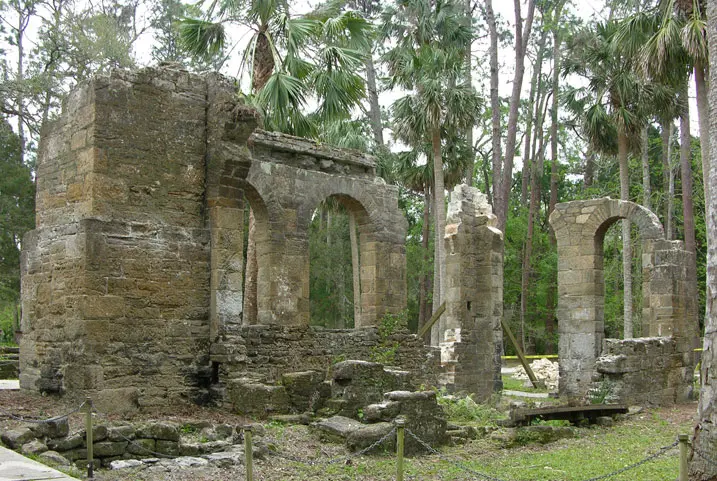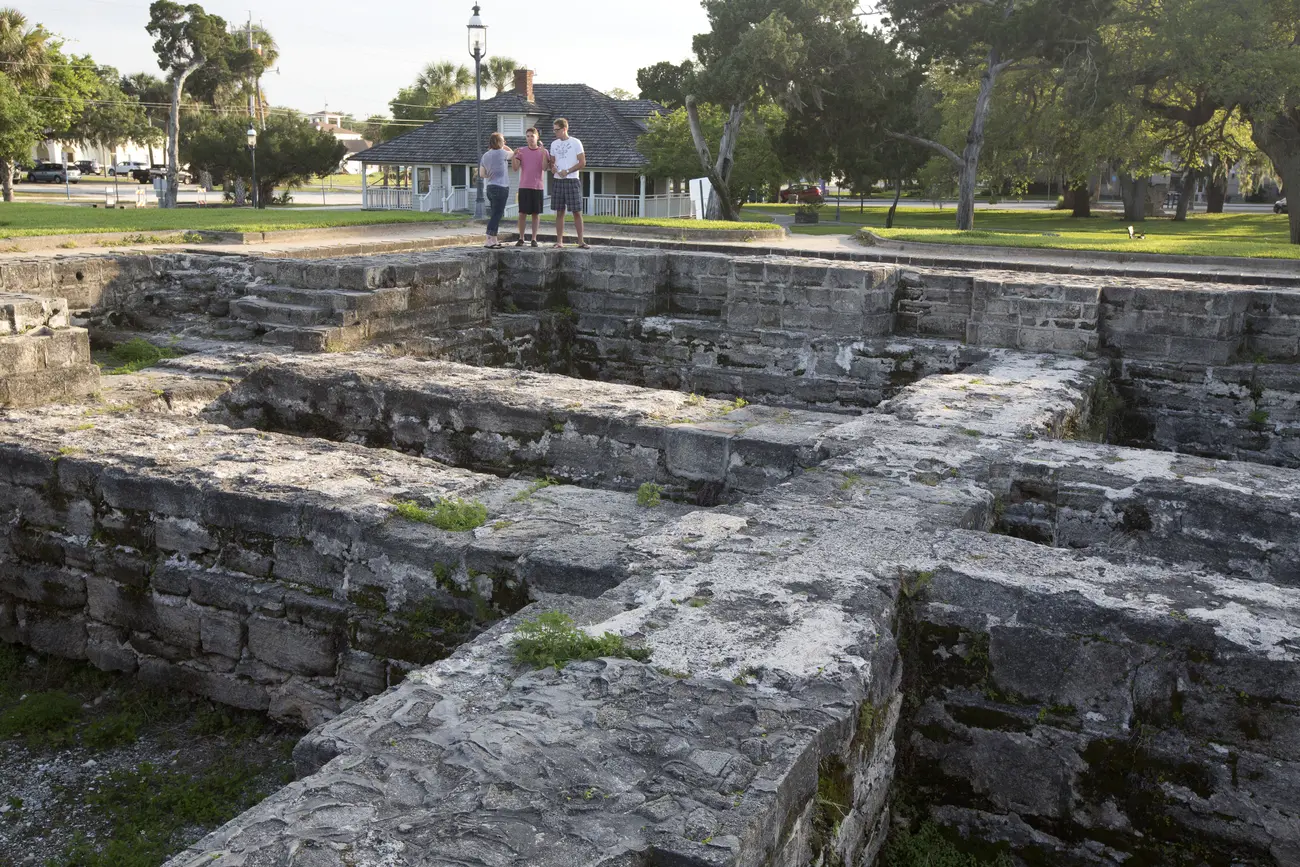Some of the most interesting and controversial architectural ruins in Florida are in New Smyrna Beach.
In 1767, Scottish physician Andrew Turnbull established the colony of New Smyrnea, south of St. Augustine. Today, the town is known as New Smyrna Beach. Turnbull created his settlement during Florida’s British period which lasted twenty years, from 1763 to 1783.
Dot Moore spent more than 30 years working with professional archaeologists and historians, uncovering historic sites and artifacts in New Smyrna.
“Dr. Andrew Turnbull, along with a partner, William Duncan, received large land grants from the British government in 1766,” Moore says. “Turnbull himself was appointed plantation manager of these, and he had all the responsibilities of recruiting people, hiring people, buying slaves, providing whatever resources that were needed to establish the Smyrnea settlement, as it was called by the British.”
Turnbull arranged to bring Greek, Minorcan, and Italian settlers to New Smyrna in 1767. He envisioned a colony that would grow cotton and other crops, to trade with Great Britain. The ships carrying the settlers were plagued with rough weather and sickness, and 148 of the 1,403 people aboard died before the ships reached Florida.
Traditionally, Turnbull is remembered as a harsh and tyrannical administrator, but Moore says that more recent scholarship is providing a more balanced perspective of him.
“Recent documentation found in Dundee, Scotland archives include Turnbull’s letters to Sir William Duncan, his partner, and throw a new light on the care he took with some of his indentured colonists,” says Moore. “Lots of ledger sheets include the equipment and supplies that he bought for these people. He faced many problems here, including political intrigue from the governor in St. Augustine, and the Revolutionary War. There was a lot of sickness and drought, which caused death and failure of crops.”
The Old Fort Ruins are located in downtown New Smyrna Beach. What can be seen today looks like a series of stone walls with no roof. While the site is called the Old Fort Ruins, no one is really sure what this structure was.
“We think based on some documentation in a letter that Turnbull wrote to Sir William Duncan, that it was the beginning of a mansion house for Duncan,” says Moore. “This was on Duncan’s 20,000 acres, Turnbull’s was a little bit north of here.”
While it is generally accepted that the structure was built as part of Turnbull’s Smyrnea settlement, there have been many theories over the years regarding the Old Fort Ruins.
“Some believe it was an English fort, some believe it was a Spanish fort. Some believe that it was not associated with Turnbull, it was maybe built by Ambrose Hull who was the next landowner after Turnbull left in 1777. Ambrose Hull came in 1801, and does record building a large stone house on a mound. This area is part of a prehistoric Indian midden dating to the St. Johns II period, from about 500 AD to 1565 AD. But we’re not 100 percent sure of any theories, even the fact that it could be Turnbull’s manor house.”
The Sugar Mill Ruins are located a few miles from downtown New Smyrna, in another public park. Destroyed in 1835 during the Second Seminole War, the remaining rounded arches and coquina walls of the building have led to some creative, but not historically accurate, speculation.
“That structure was built by a man named William Kimball for wealthy New York investors,” says Moore. “Their hope was to make a fortune, of course, by processing sugar cane into sugar. The factory was built about 1830, but it was destroyed by the end of 1835. It was never rebuilt as a sugar factory.”
Unsupported speculation has linked the two sets of ruins in New Smyrna Beach, with some people believing that the downtown ruins were a Spanish fort, and the Sugar Mill Ruins a Catholic mission.
“There’s even a tale of some people insisting that a tunnel was built underground from this area downtown, all the way out to the sugar mill, which is not quite plausible given the water table here,” says Moore.
Both the Old Fort Ruins and the Sugar Mill Ruins continue to inspire modern imaginations.

